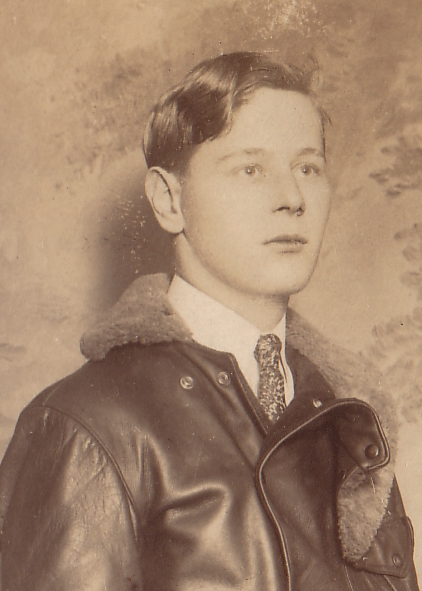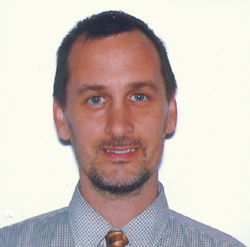Look Out, Lindbergh - Here I Come by Eddie Schneider as told to Mary Bell Dan. I choose flying as a career and bump into some funny things. I recently flew more than twelve thousand miles in a little over a month, through rain, fog, wind and snow, over mountains, cities and deserts, in a three-year-old, second-hand airplane that had already traveled some five hundred thousand miles. During that time I never was very late for an appointment or put a single scratch on myself. And considering that I am hardly an expert pilot at nineteen years of age, I knew that these statements must prove something about modern commercial aviation. But what? Being pretty close to the picture, it in hard for me to see, but It does seem that it would show that aviation is for young people as well as the older and wiser generation. In fact, in New Jersey, a boy can get his pilot's license two years before he can get his driver's license. So this is aimed at the youngsters, hoping they won't take it too seriously, and those who have arrived at years of discretion, first as pure amusement because some darned funny and interesting things can happen in aviation and second, there is a concealed missionary purpose, to show that aviation has arrived as an industry. Not that it has much bearing on the story, but because people are always asking me, my name is really Eddie: I was christened that way. It isn't very dressy, but it serves the purpose. As for background, my grandfather was some kind of Scandinavian royalty and was thrown out of it for marrying a peasant girl. Dad had a butcher shop in Jersey City. The first time I was in the air was in Germany, from Hamburg to Hanover. My sister Alice was kind of nervous and decided she didn't want to make the flight after all and started to open the door to get out, not knowing that we had taken off and were in level flight. She changed her mind, you bet, and because there was so little motion she got to like it. Dad said, when he stepped out at the airdrome, that he wished he could always travel that way. We had had to coax him hard to get him to fly in the first place. Right then I did some planning. I wanted to learn to fly a ship more than anything I had ever wanted to do in my life, but several months went by, and in the meantime I went back to work in the bank, before I was able to do anything about taking up what I hoped would be my life work. The idea stuck and one Sunday night I went out to Roosevelt Field to find out all I could about it. We have Sunday dinner late in our house and it is a good two and a half hour trip by tube and train, although you can make it in few minutes by air. It was dark when I got there and they were just about to close up for the night when I arrived. I guess they thought I was having a brainstorm by the way I came madly dashing up and asked rapid questions. They didn't take me quite seriously as a prospective student and just merely tolerated me. I fooled them. Two days later I was back again and ready to fly. Bill Ulbrich took me up over the cemetery in Westbury and pointed down, saying. "See that place? Well, you will be there if you touch the controls," and had a piece of iron pipe in his hand to enforce what he said. I don't blame him for not wanting me to monkey with the controls before I knew what it was all about, but the remark seems funny in this day of teaching you to fly by applied psychology. Then he gave me the works, loops, barrel rolls, in fact at that time I had no idea what I was getting. At the end of twenty minutes of stunting he told me to take the controls and keep the nose of the ship going straight and on the horizon in level flight. I did my best, but it was hard because I was dizzy from all the unaccustomed motions. I liked and didn't like it, but was back the next day for more. I didn't want to drag out my period of instruction, but to go through in a hurry. Aviation was beginning to skyrocket. Everyone was interested and there was lots of activity on the field, but not much system, and there was still a good deal of war surplus junk around. One piece they hadn't gotten rid of yet was an old Tommy Horn scout plane. One day a pilot who hadn't flown in about a year took it up and after circling the field a few times made a perfect landing - about feet 50 up. After that ha came down quickly and as the ship hit the ground the old rotary Le-Rhone motor kept right on spinning across the field. The wings folded up like those of a tired pigeon and the fuselage broke in three places and bent up like an old broken-down donkey. The wheels went up over the head of the pilot, who looked alarmed, but wasn't hurt. I learned something every day. Soon after I had started there a mechanic named Porter was cranking an OX Travel Air and forgot to look at the throttle to make sure it was closed. It was unfortunately half open and the minute the engine caught hold the ship started chasing him. I grabbed a wing tip, but that made it go in circles. The mechanic was too rattled to think about heading straight out, and kept just a few steps ahead of the whirling prop. Of course, it could have been a serious affair, but I can remember how funny he looked with a greasy rag that was half out of his pocket, streaming right out straight behind him and the prop almost catching it. He was swearing so hard and fast that that cut down his speed too. We would probably still be running around in circles if dear old Bill Ulbrich hadn't jumped in to cut the switch. My solo was just another solo. Bill ...
A recent photograph of Eddie Schneider with his Cessna. Eddie's winning smile has won him many friends among flyers.
A recent photograph of Eddie Schneider with his Cessna. Eddie's winning smile has won him many friends among flyers.
Source: Flying magazine; September 1, 1931. Transcribed by Richard Arthur Norton (1958- ) on December 24, 2012.









